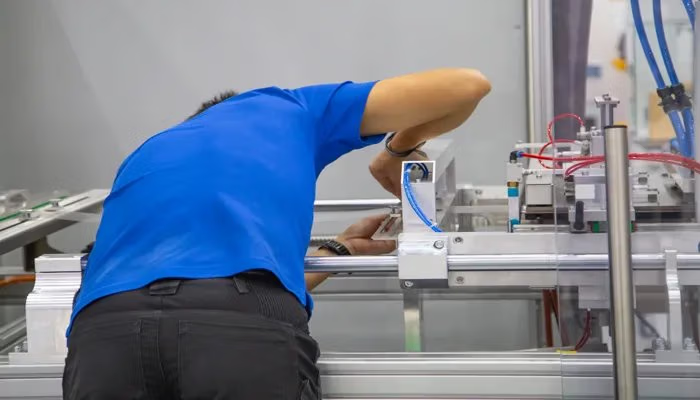Summary: In the field service industry, the First Time Fix Rate (FTFR) is a crucial metric that measures the percentage of service calls resolved on the first visit. It is a key performance indicator (KPI) used by field service organizations to evaluate their efficiency and customer satisfaction. A high FTFR indicates that technicians can diagnose and fix issues effectively during their initial visit, resulting in greater customer satisfaction and operational cost savings.
First Time Fix Rate (FTFR)
What is FTFR?
The First Time Fix Rate (FTFR) is a performance metric that measures the percentage of service calls resolved successfully on the first visit by field service technicians. It indicates the ability of technicians to diagnose and fix problems without the need for additional visits or callbacks. A high FTFR reflects the efficiency and effectiveness of field service operations.
Calculating FTFR
To calculate FTFR, divide the total number of jobs fixed on the first visit by the total number of service requests received within a specific period, and multiply the result by 100. For example, if a field service organization resolved 890 out of 1000 service requests on the first visit, the FTFR would be 89%.
Why is FTFR Important?
FTFR is an essential metric for field service businesses as it directly impacts customer satisfaction, operational costs, and productivity. Achieving a high FTFR demonstrates the ability to provide prompt and effective solutions, resulting in happier customers, increased customer retention rates, and a positive brand reputation.
The Benefits of a High First Time Fix Rate
When technicians can resolve issues on the first visit, customer satisfaction increases. Customers appreciate prompt and efficient service, as it minimizes disruptions and downtime. A high FTFR indicates that field service organizations value their customers’ time and are committed to resolving their problems quickly and effectively.
Cost Savings and Increased Productivity
A high FTFR directly impacts operational costs and productivity. By fixing issues on the first visit, field service organizations can avoid the need for additional visits, reducing travel costs and the time and resources required for multiple trips. Technicians can focus on new service calls, maximizing productivity and workforce efficiency.
Enhanced Reputation and Customer Retention
Field service organizations with a high FTFR build a strong reputation for delivering high-quality service. Satisfied customers are more likely to recommend the organization to others, leading to new customer acquisition. Additionally, improved customer retention rates can be achieved as customers are more likely to stay loyal to a provider that consistently meets their expectations.
How effectively is your team resolving issues on the first visit?
Field Service Software enhances efficiency with better diagnostics and resource planning.
Factors Affecting First Time Fix Rate
The skills and training of field service technicians play a crucial role in achieving a high FTFR. Technicians should have the technical knowledge and problem-solving skills to accurately diagnose and resolve issues. Regular training programs and skill development initiatives can help improve their expertise and effectiveness in the field.
Access to Information and Resources
Field technicians must access comprehensive information and resources to address customer issues effectively. This includes up-to-date product manuals, troubleshooting guides, and historical service records to understand the customer’s service history. Providing technicians with real-time access to relevant information equips them with the tools to diagnose and fix problems efficiently.
Efficient Field Service Management Software
Implementing a reliable field service management software solution can significantly impact FTFR. Such software streamlines scheduling and dispatching, ensuring that the right technician with the required skills and availability is assigned to each service call. It also enables real-time communication and collaboration between technicians and dispatchers, facilitating quick problem resolution.
Strategies to Improve First Time Fix Rate
Investing in comprehensive and ongoing technician training programs is vital for improving FTFR. These programs should enhance technical, problem-solving, and customer service skills. Equipping technicians with the necessary knowledge and expertise will make them better prepared to resolve issues on the first visit.
Implement Real-Time Communication
Real-time communication between field technicians and dispatchers can significantly improve FTFR. By leveraging mobile devices and field service management software, technicians can quickly communicate with dispatchers, share real-time updates, and seek guidance if needed. This enables faster problem resolution and reduces the need for additional visits.
Optimize Scheduling and Dispatching
Efficient scheduling and dispatching play a crucial role in achieving a high FTFR. Using field service management software, organizations can optimize routes, assign technicians based on their skills and availability, and prioritize urgent service calls. This ensures that the right technician reaches the customer’s location promptly, increasing the chances of resolving the issue on the first visit.
Improve Parts Management
Having the right parts and equipment readily available is essential for achieving a high FTFR. Field service organizations should invest in effective parts management systems to ensure technicians can access the required parts during service calls. This minimizes the need for return visits due to the unavailability of parts, allowing issues to be resolved promptly.
Analyze and Address Root Causes
To improve FTFR, it is essential to identify and address the root causes of recurring service calls. Analyzing service data, customer feedback, and technician reports can provide insights into common problems that require multiple visits. By addressing these root causes, field service organizations can prevent similar issues from occurring in the future, leading to a higher FTFR.
Best Practices for Maintaining a High FTFR
Setting realistic customer expectations is crucial for maintaining a high FTFR. Clearly communicating the scope of services, response times, and potential limitations helps manage customer expectations. When customers clearly understand what to expect, they are less likely to be disappointed if an issue requires multiple visits.
Foster a Culture of Continuous Improvement
Creating a culture of continuous improvement is vital for maintaining a high FTFR. Encouraging feedback from technicians, regularly reviewing performance metrics, and implementing process enhancements based on lessons learned can help improve service delivery and problem resolution.
Monitor and Track FTFR Regularly
Regularly monitoring and tracking FTFR is essential to identify trends, patterns, and areas for improvement. Organizations should establish benchmarks and track FTFR against industry averages and their own historical data. This allows them to measure progress, identify areas of concern, and implement targeted strategies to improve FTFR.
Leverage Field Service Management Solutions
Implementing a robust field service management solution can significantly contribute to maintaining a high FTFR. These solutions streamline various aspects of field service operations, including scheduling, dispatching, parts management, and real-time communication. By leveraging the capabilities of such software, organizations can optimize their processes and improve FTFR.
Empower Field Technicians with the Right Tools
Equipping field technicians with the right tools is crucial for achieving a high FTFR. This includes providing them with mobile devices, access to real-time information, and field service management software. These tools enable technicians to quickly retrieve customer information, diagnose problems, and access troubleshooting guides, increasing their efficiency and effectiveness.
Conclusion
The First Time Fix Rate (FTFR) is a critical metric in the field service industry. Achieving a high FTFR is essential for improving customer satisfaction, reducing operational costs, and enhancing the reputation of field service organizations. By focusing on technician training, efficient communication, optimized scheduling, effective parts management, and continuous improvement, organizations can significantly improve their FTFR and deliver high-quality service to their customers.
FAQ First Time Fix Rate
What is the industry average for FTFR?
The industry average for FTFR (First Time Fix Rate) can vary depending on the specific field service sector. However, according to research conducted by the Aberdeen Group, best-in-class field service organizations achieve an average FTFR of 80% or higher.
How can a high FTFR help with customer retention?
A high FTFR indicates that field service organizations are able to resolve customer issues effectively and promptly. This helps build trust and confidence in the organization’s ability to deliver quality service. Satisfied customers are more likely to continue using the services of a company that consistently resolves their problems on the first visit. By achieving a high FTFR, field service organizations can improve customer retention rates and reduce customer churn.
Does weather impact FTFR in field services?
Yes, adverse weather conditions can affect FTFR (First Time Fix Rate) by delaying technician arrival, complicating repairs, or increasing the likelihood of follow-up visits.
How can field service organizations analyze and address root causes to improve FTFR?
Analyzing and addressing root causes requires a systematic approach. Field service organizations can review service data and reports to identify common issues that result in multiple visits. They can also gather feedback from technicians and customers to gain insights into recurring problems. Once the root causes are identified, organizations can proactively address them. This may involve additional training for technicians, improving product quality, enhancing troubleshooting resources, or making process improvements to prevent similar issues from occurring in the future.
What role does customer expectation management play in improving FTFR?
Managing customer expectations is crucial for maintaining a high FTFR. Organizations can avoid customer dissatisfaction when an issue requires multiple visits by setting realistic expectations regarding response times, service limitations, and potential outcomes. Clear and transparent communication with customers helps manage their expectations and ensures that they understand how to resolve their issues. Setting realistic expectations also helps build trust and credibility with customers.
How does FTFR influence customer referrals?
A high FTFR increases customer satisfaction, leading to more positive word-of-mouth and higher referral rates.
What are the consequences of a low FTFR?
A low FTFR (First Time Fix Rate) can result in decreased customer satisfaction, higher operational costs, lower technician morale, and a damaged company reputation.
How does FTFR affect service contracts and agreements?
A high FTFR can lead to better service contracts and agreements, as clients are more likely to trust and renew contracts with providers who consistently resolve issues quickly.
How can Field Service Management software support improving FTFR?
Field Service Management software helps raise FTFR by giving technicians instant access to digital work instructions, past service history, and real-time parts availability. By streamlining scheduling and automating workflows, it reduces repeat visits and ensures issues are fixed correctly the first time.
Image: Adobe Stock – Copyright: © Itsanan – stock.adobe.com





